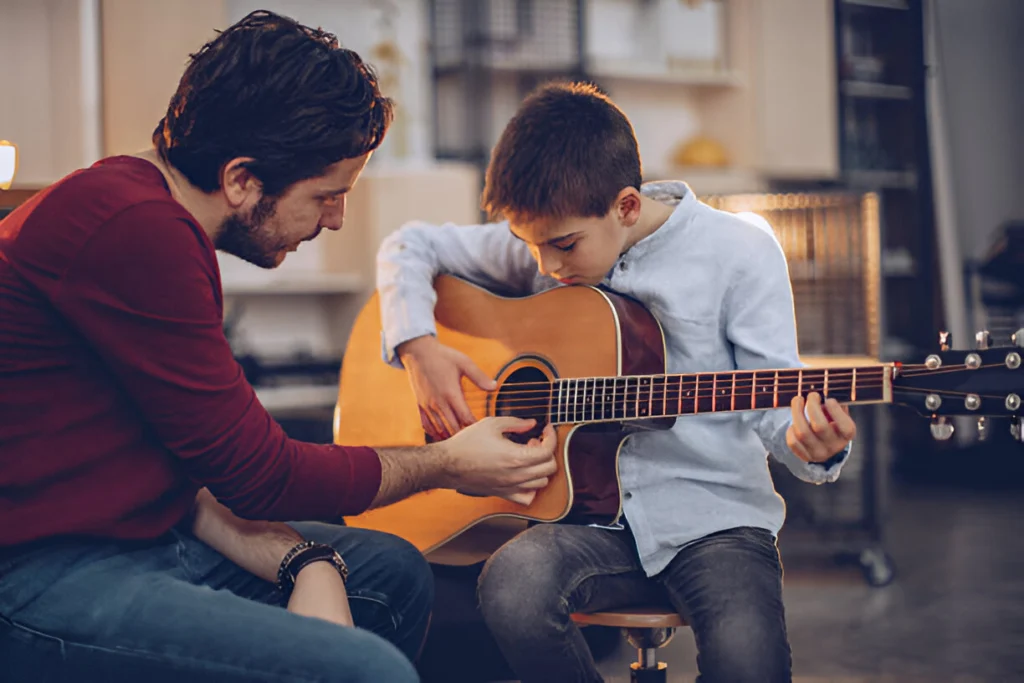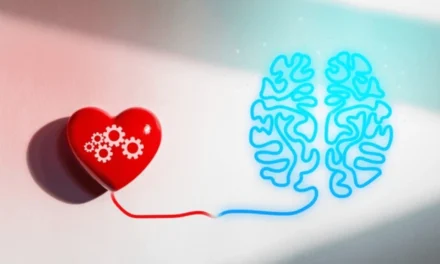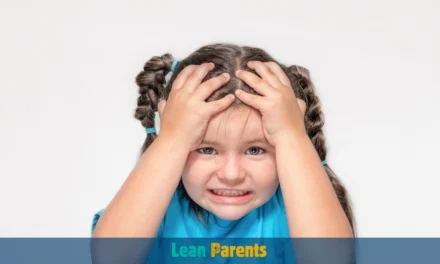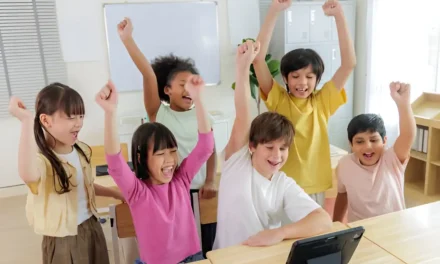As a parent, I’ve faced the tough times of transitions. Whether it’s the start of school or a family trip, it’s hard to see your child struggle. But, there are ways to make these times easier for them.
Many kids find transitions hard, leading to behaviors like whining and tantrums1. For those with ADHD, anxiety, or autism, it’s even more important. These strategies can turn a tough day into a good one1. Showing your child how to manage is also key.
Key Takeaways
- Consistent routines can help with daily transitions and have a significant impact1.
- Visual cues, countdowns, and previewing can aid in smoother transitions for children1.
- Rewards and consequences are effective tools for managing transitions1.
- Getting a child’s attention through various methods can improve the effectiveness of communication during transitions1.
- Creating routines and providing previews can facilitate smoother transitions for children of all ages1.
What are Transitions and Why are They Challenging?
Transitions are the changes we all face in life. For kids, these changes can be tough. It might be a new home, school, or routine. These times can make kids act out, from annoying to upsetting2.
Common Triggers for Difficult Behaviors
For kids with ADHD, anxiety, autism, or sensory issues, changes are hard. Kids with ADHD might get upset and stall because things seem less fun3. Kids with autism can get overwhelmed and have big reactions like meltdowns3. Sensory problems can also make changes hard, as kids get too much stimulation and feel lost3.
Transitions as a Source of Anxiety and Distress
Changes mean leaving old habits behind, which can be scary but needed for growth2. This uncertainty can make kids feel scared, anxious, and worried2. But, with the right help and ways, kids can get through these tough times and become stronger2.
| Condition | Transition Challenges |
|---|---|
| ADHD | Fewer rewarding neurons, difficulty managing emotions |
| Autism | Cognitive inflexibility, sensory overwhelm |
| Sensory Processing Disorder | Easily overstimulated, feeling out of control |
The Importance of Routines and Consistency
Creating routines and sticking to them can really help when moving with your child. These habits offer a sense of safety and control. They also help your child grow socially, emotionally, and behaviorally.
Creating Predictable Structures for Daily Transitions
Studies show that predictable places and positive interactions with adults are key for kids. They help kids develop socially and emotionally. They also prevent bad behavior by setting clear rules4.
Consistent routines make kids feel in charge and safe. They know what’s next, which is good for their growth and happiness4.
Routines are great for young kids’ mental health. They help kids learn to control themselves and feel secure5. Bedtime and dinner routines are especially helpful, making kids feel safe and happy5.
These habits teach young kids to control themselves6. They offer comfort and safety6. They also reduce fights between parents and kids6.
Routines teach kids good behavior and safety6. They help kids make friends and handle changes6.
When schools reopen, it’s important to teach routines again. Use pictures and explain changes to help kids adjust4.
Routines make parents happy too6. They give kids a chance to learn important skills. Skills like making friends and following rules6.
“Rituals, a special type of routine, help create family identity and promote positive connection among family members, contributing to positive developmental outcomes in children.”5
When working with families, keep things simple. Use what they already do. Let kids help and make choices to make routines work better4.
Routines are the steps in a schedule. The schedule is the whole day’s activities. Both are key for kids to feel secure and structured4.
Previewing and Countdowns: Easing into Transitions
Starting the school day or going to the park can be tough for kids. But, with the right strategies, you can make these moments easier. Using previewing and countdowns can help a lot.
Before a change, take a moment to preview what’s next. Say, “In 20 minutes, it’s time to finish breakfast and go to school.” Then, give a 10-minute and 5-minute countdown to keep your child ready7. This simple trick can cut down on bad behavior during changes by up to 70%7.
Also, try role-playing the transition with your child. Dr. Rosenthal advises, “Practice moving from one thing to another with them.”7 This hands-on method helps your child get ready for changes, making them smoother.
| Transition Support Strategy | Documented Effectiveness |
|---|---|
| Providing transition warnings through timers or countdowns | 70% reduction in disruptive behaviors during transition times7 |
| Incorporating sensory supports during transitions | 50% increase in comfort levels for students7 |
| Recognizing students’ accomplishments and offering incentives | 65% increase in students’ confidence in handling transitions7 |
By previewing the day and using countdowns, you can make your child feel more ready and less worried about changes8. This way, you both can have a better experience.
The Power of Music and Songs

Music and songs are key for helping young kids with transitions. Music can change the mood and feel of any, including classrooms9. It can make kids excited, focused, and ready to move on9.
Using Familiar Tunes to Signal Transitions
Using songs kids know and love is a great way to signal it’s time to move. Let kids pick the songs they like9. This makes them feel more in charge and happy during changes.
Catchy songs can make kids want to move fast9. Music grabs their attention and helps them stay on track9.
The right song can calm or energize kids, making it easier to switch tasks9. By picking songs kids know, teachers and parents can signal it’s time for something new.
| Self-Management Skill | Music-Based Activities |
|---|---|
| Regulating emotions and behavior | “Freeze dance” game, songs with deliberate pauses (“Seven Jumps”, “My Poor Hand is Shaking”) |
| Practicing turn-taking and social skills | Group response songs (“Down by the Bay”, “Boom Chicka Boom”) |
| Calming and self-soothing | Lullabies, calming instrumental music (Jammy Jams series) |
| Maintaining motivation and perseverance | Energetic songs (“Eyes on the Prize”, “Fight Song”) |
| Developing academic skills | Understanding rhythm concepts and comparing to math |
Music and songs are great for helping kids manage themselves, especially during changes10. By using songs kids love, we can help them stay calm, focused, and motivated. This makes it easier for them to move between activities.
“Music can move individuals to the heights or depths of emotion, persuade buying decisions, boost mood, and uplift people from depression.”11
Music deeply affects our brains and feelings, making it a powerful tool for kids during transitions11. By using music, we can make a better, more fun place for kids to deal with the ups and downs of life.
Visual Cues: Supporting Transition Through Visuals
Visual cues can really help with transitions, whether at home or in school. They can make things clearer, reduce stress, and help kids feel more in control of their day12.
Things like schedules, timers, and symbols are easy for kids to understand. This is especially true for those who might struggle with language or developmental issues1213. These visuals show the steps of a transition, which can cut down on tantrums and resistance12.
Visual cues also help with memory and thinking skills. They can improve how kids remember things, organize, and follow steps, especially for those with developmental differences12. Making sure the visuals match the child’s level, like pictures or real objects, makes them even more helpful13.
It’s important to be consistent with visual supports. Using them everywhere and with all caregivers makes things more predictable. This can help reduce stress and make transitions smoother13.
Adding visual cues to your transition plans can really help kids. It can reduce bad behavior and make the day flow better121314.
Handling Transitions: Getting Their Attention
Life’s transitions can be tough, especially for kids with ADHD. Dr. Matthew Rouse says making a direct connection with your child is key. This means eye contact, sitting beside them, or asking them to repeat what you said. Yelling from across the room won’t work and will only cause frustration15.
Here are some effective ways to get your child’s attention during transitions:
- Use countdown timers and verbal cues to help them prepare for changes15.
- Play music or songs to signal the transition1516.
- Let them use hand signals or interactive elements15.
- Reteach the transition process, especially in the first few weeks of school15.
Make transitions engaging, structured, and focused on the child’s needs. Quick, clear transitions with lots of learning time are key15. These strategies will help your child move through transitions smoothly and confidently.
| Transition Type | Examples | Challenges | Strategies |
|---|---|---|---|
| Entering the Classroom | Moving from drop-off or school bus into the classroom | Confusion, lack of readiness to end previous activity16 | Countdown timers, visual schedules, music cues17 |
| Switching Activities | Going to the library, rotating between small group activities | Tantrums, aggression, noncompliance16 | Reteaching transition process, allowing active participation15 |
| Exiting the Classroom | Dismissal at the end of the day | Disruptive behavior, property destruction16 | Visual cues, structured movement, music engagement17 |
By using these strategies and staying connected with your child, you can make transitions easier. A bit of attention and structure can greatly improve the transition process for both you and your child151716.
Reward Systems: Positive Reinforcement for Smooth Transitions

Creating effective reward systems can help kids transition smoothly. Reward systems for transitions and positive reinforcement for transitions make learning fun. They help kids feel secure and adaptable18.
Teachers and parents can use stickers, tokens, or praise to reward good behavior during transitions1920. These methods motivate kids to behave well. They also improve self-esteem, communication, and teamwork skills20.
Studies show that positive reinforcement in daycare boosts learning and social skills20. It’s also better than punishment for changing behavior18.
| Benefit | Impact |
|---|---|
| Boosts confidence and growth mindset | Encourages children to take on new challenges20 |
| Improves communication and cooperation | Strengthens teacher-student relationships20 |
| Enhances academic engagement and achievement | Supports cognitive development20 |
| Promotes social skills development | Encourages cooperation, sharing, and peer interaction20 |
Positive reinforcement works well, but we must balance it with intrinsic motivation. This avoids negative effects like decreased motivation or ethical issues20. By designing reward systems carefully, we can support kids in their transitions. This helps them succeed in the long run19.
Implementing Appropriate Consequences
When a transition is not smooth, it’s best to pay less attention to it instead of making it worse. David Anderson, PhD, a clinical psychologist at the Child Mind Institute, suggests ignoring it if the child is trying. But, if they’re being really bad, a proper consequence is needed to show they can’t act that way21.
Setting the right consequences helps kids understand what’s okay and what’s not during transitions. Using rewards like stickers or points can make them want to behave better21. Also, praising them when they do transition well can make them want to keep it up21.
Starting a new year can make transitions harder because routines are still forming22. The COVID-19 pandemic has also changed classroom schedules, making things even tougher22. By using the right consequences, we can help kids get through these tough times and learn to transition smoothly21.
Handling Transitions: Praise and Encouragement
When you’re dealing with transitions with your child, it’s key to celebrate their wins. Early childhood experts say giving praise and feedback helps kids move between activities smoothly23. Always show your excitement and point out what made the transition easy23.
Keep in mind, there are many times when things go well. Make sure to notice and thank your child for these moments. Dr. Rouse suggests being very positive and saying things like, “This was great! You handed over the iPad right away and started brushing your teeth. Now we have more time to read.”23 This kind of praise helps your child want to keep doing well.
Also, think about using rewards when your child does well. It could be a sticker, a high-five, or a fun activity. The goal is to make your child link good behavior with good results23.
Talking about what you want and how you feel can make transitions easier23. Ask your child how they feel about the change and listen carefully. This makes them feel understood and less likely to act out.
By praising successful transitions and encouraging good transitioning behaviors, you help your child handle changes better. With patience, consistency, and creativity, your child will get better at moving through transitions2324.
| Transition Strategies | Benefits |
|---|---|
| Provide specific praise and positive feedback | Reinforces desired behaviors and encourages successful transitions |
| Incorporate rewards and incentives | Positively associates good behavior with a positive outcome |
| Encourage communication of feelings and emotions | Helps children feel heard and understood, reducing challenging behaviors |
Preparing for the Transition Back to School
As summer ends, families must adjust to school routines. One big change is getting kids back to regular sleep times25. Kids aged 6 to 13 need 9 to 11 hours of sleep each night for better coping with stress25.
Parents should start setting sleep routines a few weeks early. This means cutting down on screen time before bed, sticking to a bedtime routine, and doing calming activities before sleep25. It’s also important to ensure kids get enough exercise and avoid too much caffeine25.
Reviewing rules and expectations with kids is also key. Talking openly helps during the transition and all year26. Discuss after-school rules, like doing homework first and having friends over, to avoid confusion26.
Adjusting Sleep Schedules and Routines
Having a daily routine is very helpful for kids. They like knowing what to expect, making the school transition smoother2625. Regular morning and after-school routines give kids a sense of security and comfort25.
Reviewing Rules and Expectations
Encouraging independence is important for kids’ confidence and self-discipline26. Letting kids choose their outfit, lunchbox, and backpack helps them feel in control25.
“Difficult moments during the transition to school are acknowledged and viewed as unique and individual processes for each child, with methods suggested for parents to navigate these situations with patience and understanding.”26
By preparing for the transition back to school and adjusting routines for school, families can reduce stress and anxiety. Focus on sleep, clear expectations, and encouraging independence to help kids start the new school year with confidence and excitement.
Managing COVID-19 Transitions and Anxieties
The world is still dealing with the COVID-19 pandemic. Parents and families are focusing on managing transitions and easing anxieties. Most measures to fight the virus have worked, but they come with big costs27. The transition phase is full of challenges and risks, like second waves of infection. We need to stay careful and follow rules like distancing27.
Try to set up a virtual meeting with your child’s teacher before school starts. Use Zoom or Microsoft Teams for video calls. This can help ease the transition and answer any questions or concerns28. Also, keep talking to the teacher to stay informed and ensure a smooth start to the new year.
Get your child used to wearing a mask for long periods before school starts. The most important thing is to stay calm. Your child will sense your anxiety, so speak softly and show them you’re safe and secure.28
Adjusting to the COVID-19 transition may take time. A year of mostly online life has mixed up our home, work, and school lives28. People worry about safety, masks, and being around others. Everyone needs different time to get used to the new normal28.
It’s crucial to take care of yourself during this stressful time. Keep a routine, go outside, exercise, sleep well, and focus on your well-being28. Grounding techniques, like feeling your body and breathing, can also help with anxiety28.
The transition process will keep changing as the situation evolves27. By staying calm, talking openly, and taking care of yourself, you can help your family get through the COVID-19 transition and reduce anxieties.
“Poorly timed and managed transitions can risk reverting gains made against COVID-19 with high social and economic costs.”27
| Potential Challenges During COVID-19 Transitions | Strategies to Manage Them |
|---|---|
| Ambiguity in messages and competing demands from society | Continuous adjustment and engagement with communities |
| Fear and stigma leading to discrimination | Avoiding stigmatization and engaging with populations |
| Disruptions in testing and contact tracing | Careful planning and expert advice from social and behavioral sciences |
By navigating the COVID-19 transition with empathy, adaptability, and self-care, families can overcome challenges and anxieties. This helps build resilience and well-being2728.
Starting Kindergarten: Tips for a Smooth Transition
Starting kindergarten is both exciting and challenging for kids and parents. It means a longer school day, riding the bus, and more responsibilities. But, with the right preparation, your child can make this transition smoothly.
Building Self-Advocacy and Empathy Skills
Teaching your child to speak up and show empathy is key. Practice saying “I need to use the bathroom” or “I don’t feel well.” This helps them communicate better29.
Also, talk about helping friends who are sad or scared. Encourage them to ask teachers for help if they see bullying or need assistance29.
These skills are crucial for kindergarten and will help your child in school and life.
“A good way to do this is through role-play. Ask your child what he thinks he should do if he feels sick at his desk at school, and help him come up with some words that he could use with his teacher.”
Role-playing different scenarios prepares your child for kindergarten. It builds their confidence to speak up and care for others29. This way, they start school feeling ready and positive.
The kindergarten transition is a big step, but with the right support, it can be smooth. Focus on teaching self-advocacy and empathy. This will help your child succeed in their new school29.
Here are some stats about kindergarten transition:
- Children might feel anxious starting kindergarten.
- A routine can make them feel more secure.
- Visiting the school before can reduce anxiety.
- Reading books about kindergarten can ease worries.
- Role-playing helps prepare for school situations.
- Being positive about kindergarten can comfort children.
- Letting children help with school prep can excite them.
- Short goodbyes on the first day can help.
- Parents should avoid returning after saying goodbye to avoid prolonging anxiety.
- If a child struggles, talk to the teacher or pediatrician for help.
30This episode of the Kindergarten Cafe Podcast talks about managing transitions. It covers clear directions, avoiding repetition, and using visual timers and cleanup tasks to help with transitions.
Transitioning to Middle School
Young teens moving from elementary to middle school face many worries. They must adjust to new classrooms, keep up with schoolwork, and make friends. Studies show that 66% of students wish they had more than one sixth-grade teacher for seventh grade31. It’s important for parents to talk openly with their kids about these concerns.
Helping your child feel better can be simple. If they’re worried about being late, tell them teachers give enough time for students to get to class. If they’re scared of not knowing anyone, remind them of times they made friends even when they didn’t know anyone. Practicing different scenarios can also make them feel more ready.
Seeking Peer Advice and Perspectives
Talking to peers who have gone through this transition can also be very helpful. Research found that 23 fifth-graders in a middle school highlighted social needs as key during this time. For boys, 6 out of 11 top needs were social, and for girls, 5 out of 10 were social31. Hearing from older students can ease your child’s worries and give them a better idea of what to expect.
By addressing your child’s worries, encouraging open talk, and using peer advice, you can help them smoothly transition to middle school. Studies show that students’ views on school life often drop as they move from elementary to secondary school. The biggest drop is when they start middle school31. Being prepared can greatly help them through this big change.
Transitioning to High School
Starting high school is exciting but also scary for students and their families. It’s like moving from elementary to middle school, but with more work and a bigger school3233.
Acknowledging Challenges and Past Successes
Your teenager might worry about being at the bottom again, managing a tough schedule, and harder classes33. Tell them to think about how they handled school changes before. Remind them to use those strategies again32.
If they’re worried about the workload, remind them high school is tougher. But, they’ve always worked hard and succeeded32. Share their past wins to boost their confidence and strength during this change33.
| High School Transition Tips | Benefits |
|---|---|
| Start preparing as early as 5th grade32 | Allows students and families to gradually become familiar with the new environment |
| Participate in orientation and summer programs32 | Helps incoming freshmen feel more comfortable and connected to the school community |
| Seek support from teachers, counselors, and mentors34 | Builds important relationships that can benefit students beyond high school |
| Develop time management and study skills33 | Equips students to handle increased academic demands and responsibilities |
| Get involved in extracurricular activities34 | Provides opportunities to explore interests and build a sense of belonging |
By facing the challenges and celebrating past wins, you can help your teenager feel ready for high school. They’ll start with confidence and a positive attitude33.
Handling Transitions: Dry Runs and Practice
Transitions can be tough, but with the right prep, your child can feel more at ease. If they’re starting at a new school, try a dry run to get them used to the place35. Take them on a walk or drive to school and check out the building together. Show them where they’ll eat, play, and relax35.
Even if you can’t visit the school, you can still get ready for the first day. Walk through the day with your child, talking about lunch and what they’ll do. Encourage them to ask questions and do your best to answer35.
- Practice getting ready for bed or leaving the house in the morning at home36.
- Teach your child how to stay focused and manage their time well36.
- Get older kids or friends to help younger ones learn and practice transitions36.
By doing dry runs and practicing transitions, you can help your child feel more ready and confident3536.
“Transitions are not only a challenge for children but for adults as well. Practicing them ahead of time can make all the difference in the world.”
Conclusion
Remember, you’re not alone as you start the new school year. Use routines, visual cues, and positive feedback to help your child adjust37. Transitions can be tough, but with the right support, your child can face them with confidence.
Changes like moving to a new grade or school are big steps. Focus on the good things and celebrate your child’s growth38. Use phrases like “In conclusion” to guide them through these changes smoothly.
Helping your child handle transitions is about giving them the tools to succeed39. By using strategies that make transitions easier, your child can grow and learn happily. With your help, they’ll learn to handle change with confidence.





